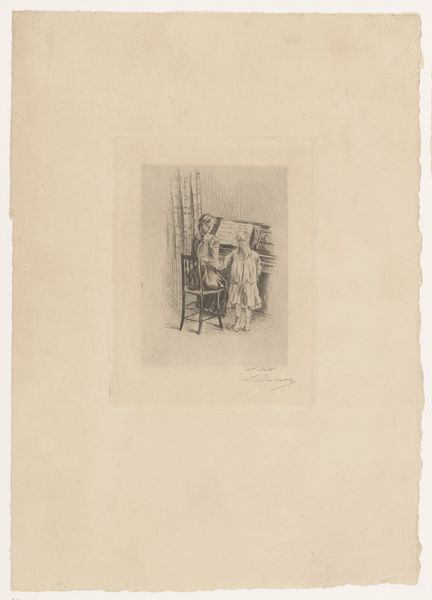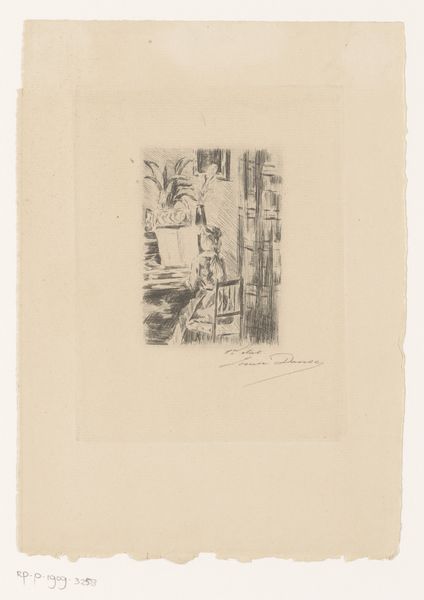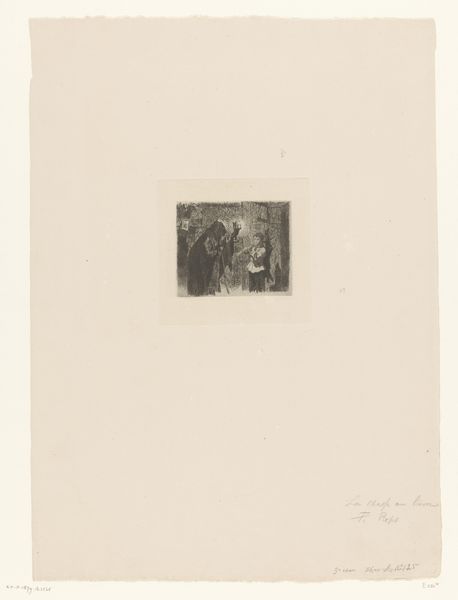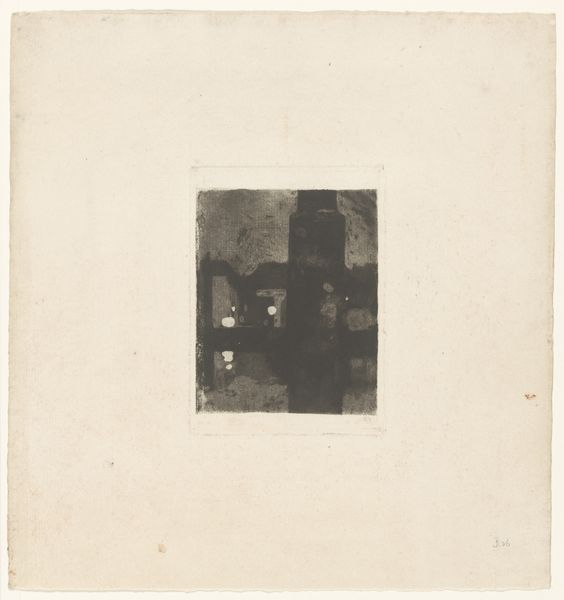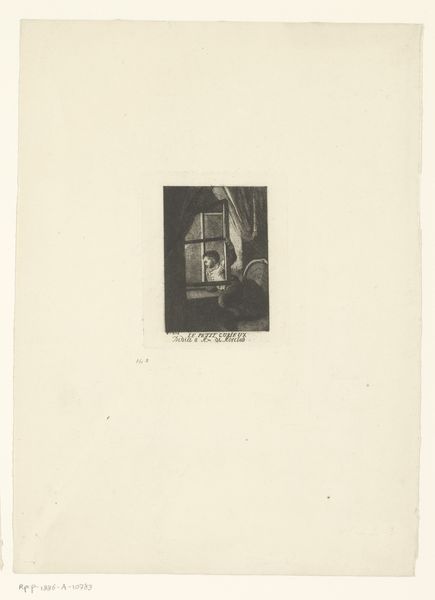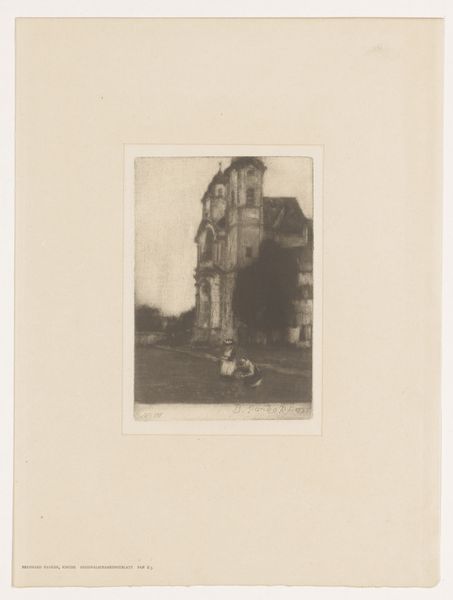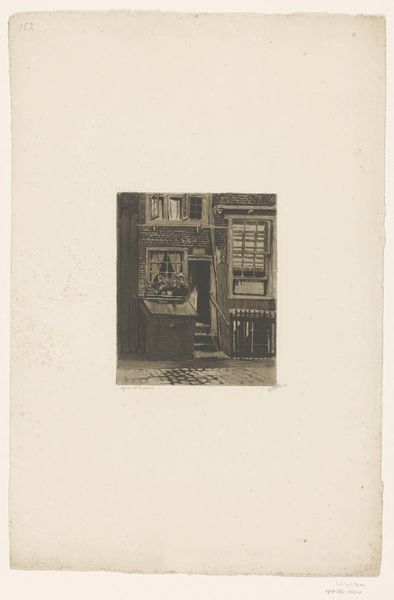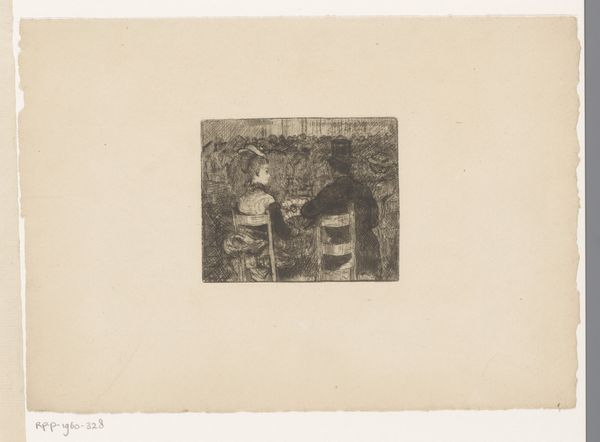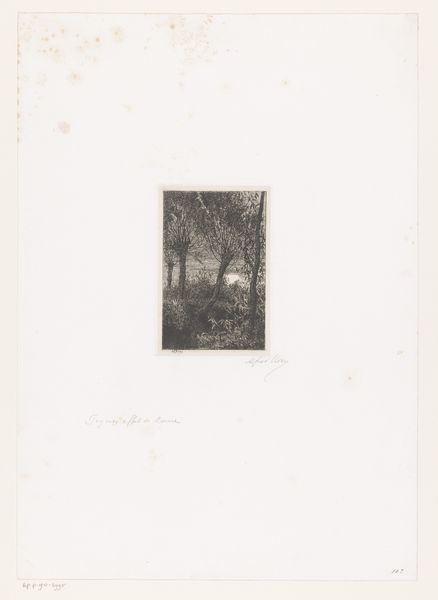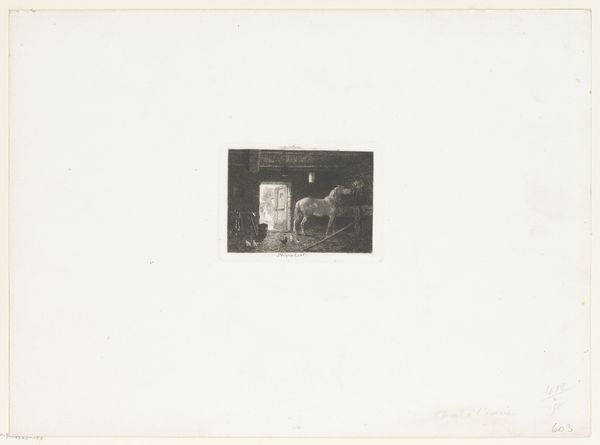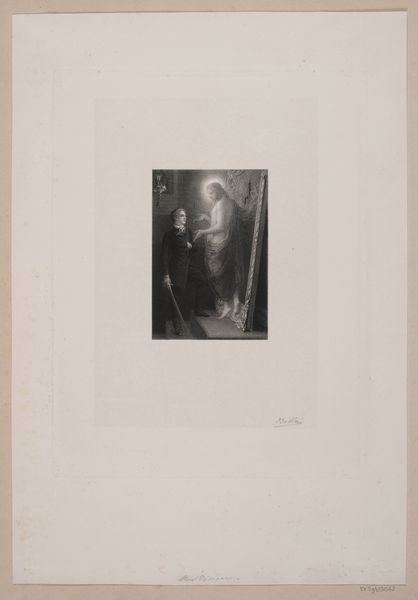
drawing, paper, ink
#
portrait
#
drawing
#
paper
#
ink
#
genre-painting
Dimensions: height 158 mm, width 120 mm
Copyright: Rijks Museum: Open Domain
Curator: Before us we have Louise Danse’s, “Pianospelend meisje,” which translates to "Girl Playing Piano.” It was created sometime between 1877 and 1909 and now resides in the Rijksmuseum. It’s a drawing on paper using ink. What strikes you first about it? Editor: Immediately, its domestic intimacy. The composition feels so tight, focused. And the materiality is interesting—the contrast between the crispness of the ink and the almost porous, rough edge of the paper itself. It gives it a fragile feel, doesn't it? Curator: Indeed. In the late 19th century, the private sphere, particularly the education and upbringing of young women, became a focal point of societal expectations and anxieties. Note how the interior acts almost as a stage setting, highlighting the performative aspect of bourgeois domesticity and how young girls are groomed. Editor: Right, and think about the actual making of the drawing itself— the labor, the ink, the paper. Was this created as a quick study? Or meant for widespread distribution in illustrated magazines? The drawing itself, the physical thing, would've circulated within a specific market of bourgeois art consumption. Curator: Definitely. And one can imagine the role of music in solidifying cultural norms for young women—practicing an instrument became almost a symbolic duty for daughters from a certain social standing, demonstrating refinement and class. Yet also think about how this expectation might conflict with a young woman's individual aspirations. Editor: And I think knowing that, in examining these seemingly simple materials and observing how they are distributed and consumed helps us move away from sentimental, nostalgic views of girlhood in the late 19th century, and really start interrogating class and cultural capital. Curator: Absolutely. Danse has created an image deeply embedded in the societal narratives around gender and class, and, though rendered with a light hand, the drawing opens space to consider broader conversations around the lives of young women at the time. Editor: It's impressive how a humble piece of paper, some ink, can reveal so much. It makes you reconsider our relationships with even the most ordinary items in our homes.
Comments
No comments
Be the first to comment and join the conversation on the ultimate creative platform.
